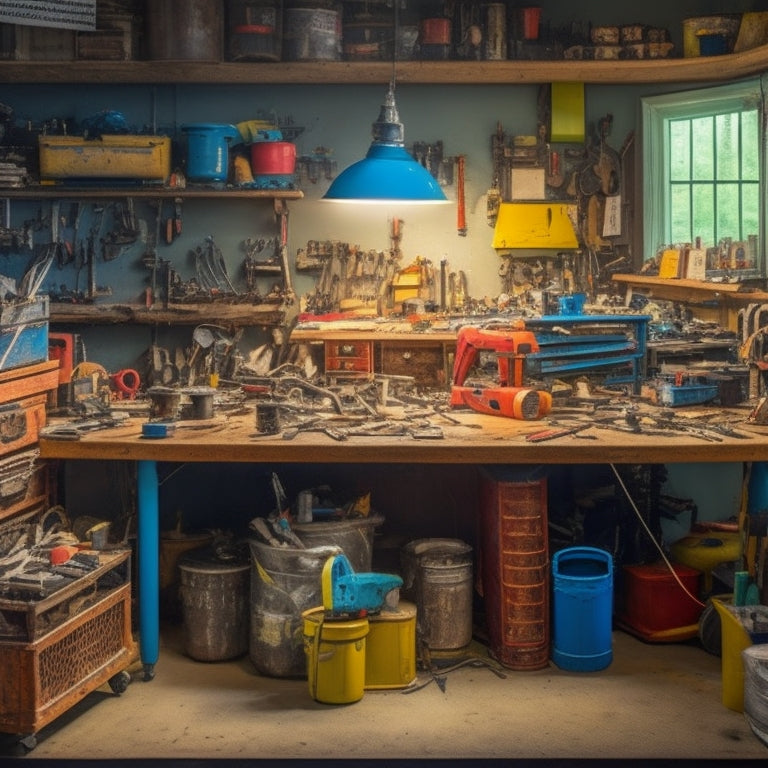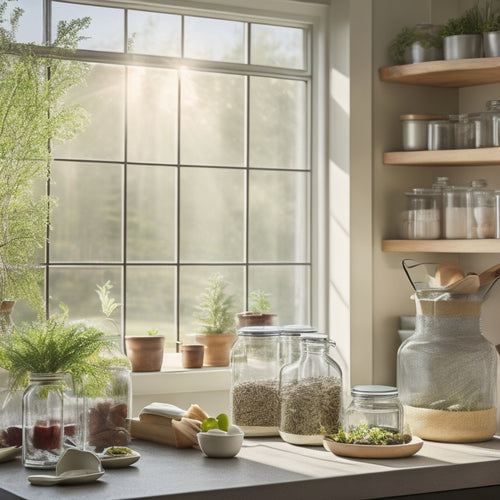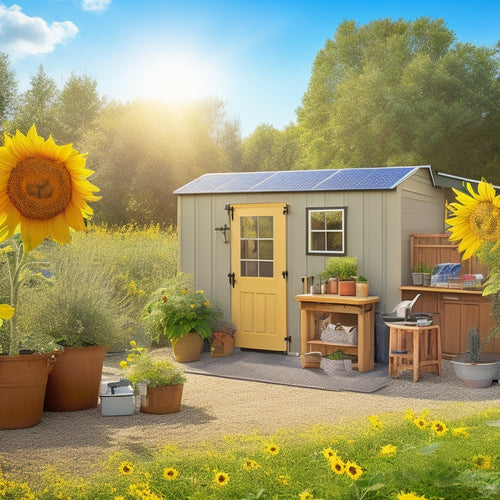
What to Consider for a DIY Installation
Share
When tackling a DIY solar installation, you'll need to carefully consider five key factors to guarantee a successful outcome. You'll need to assess your daily energy usage and calculate your maximum power demand to determine the right system size. Choosing high-quality equipment, including solar panels and inverters, is also vital. Additionally, you'll need to evaluate your roof's structural integrity and verify compliance with local building codes and permits. Finally, it's important to prioritize safety by wearing protective gear and mitigating electrical hazards. By thoroughly considering these factors, you'll be well on your way to a successful DIY installation - and there's more to investigate.
Key Takeaways
- Calculate daily energy usage in watt-hours to determine the required system size and optimize energy production.
- Select high-quality solar panels and compatible inverters to ensure efficient energy conversion and minimize losses.
- Assess roof pitch, load capacity, and structural integrity to ensure a safe and secure installation that can support the system.
- Familiarize yourself with local building codes, zoning regulations, and permit requirements to avoid costly rework and fines.
- Prioritize safety by wearing protective equipment, avoiding electrical hazards, and maintaining a stable working platform to mitigate risks.
Assessing Your Energy Needs
As you commence your DIY solar panel installation expedition, evaluating your energy needs becomes an essential first step. You must determine your total energy consumption to guarantee your solar panel system can meet your requirements.
Start by calculating your daily energy usage in watt-hours (Wh). Next, perform load calculations to identify the maximum power demand of your appliances and devices.
Reflect on the importance of high-efficiency solar panels to optimize energy production, and also think about scalable systems that can adapt to your changing energy needs. This will help you size your solar panel system accurately.
Be sure to contemplate factors like efficiency, voltage, and current when making your calculations. By accurately evaluating your energy needs, you can design a solar panel system that meets your power requirements and minimizes energy waste.
Choosing the Right Equipment
Having accurately sized your solar panel system, you're now ready to select the right equipment to bring your DIY installation to life.
Choosing the correct equipment types is essential for a successful installation. You'll need to select high-quality solar panels, inverters, mounting hardware, and installation tools.
When evaluating solar panels, consider key performance indicators such as efficiency and warranty to maximize energy harvesting and minimize maintenance. High-efficiency solar panels with durable warranties can make a significant difference in energy production.
Select panels with high efficiency ratings and durable construction.
Inverters: Choose an inverter that matches your system's voltage and current output.
Mounting Hardware: Verify your mounting system is compatible with your roof type and can withstand environmental conditions.
Installation Tools: Invest in a toolkit that includes wire strippers, pliers, and a multimeter to guarantee a safe and efficient installation.
Roof and Structural Considerations
Your roof and structural integrity play a critical role in supporting your DIY solar panel installation.
When evaluating your roof's suitability, take into account its pitch, which affects the angle at which solar panels are installed. A steeper roof pitch may require specialized mounting hardware, while a shallower pitch may allow for more flexible installation options.
Additionally, assess your roof's load capacity to verify it can support the weight of the solar panels, mounting hardware, and any additional components.
It's also important to think about the reliability and efficiency of your off-grid solar battery charging system, as it directly impacts your energy autonomy.
A structural engineer or contractor can help determine your roof's load capacity and identify any potential weaknesses that need to be addressed before installation.
Local Building Codes and Permits
Local building codes and permits serve as a crucial hurdle to clear before commencing your DIY solar panel installation.
You must guarantee compliance with local regulations to avoid costly rework, fines, or even removal of the system.
Before submitting your permit application, consider the following:
-
Zoning regulations: Verify that your solar panel installation complies with local zoning laws, including setback requirements and restrictions on system size.
-
Building codes: Familiarize yourself with local building codes, including electrical and structural requirements.
-
Permit application process: Understand the permit application process, including required documentation and fees.
- Inspection and approval: Schedule inspections and obtain necessary approvals before energizing your system.
Safety Precautions and Risks
As you commence a DIY solar panel installation, you're not only handling electrical and structural components but also maneuvering heights, weights, and weather conditions, making it vital to prioritize safety precautions and mitigate potential risks.
You must wear personal protective equipment, such as hard hats, gloves, and safety glasses, to prevent injuries from falling objects or electrical shocks.
Be aware of electrical hazards, like exposed wiring or faulty connections, which can lead to electrocution or fires.
Ascertain a stable and secure working platform, and always maintain three points of contact when climbing or working at heights.
Additionally, monitor weather conditions and avoid working during strong winds, lightning storms, or extreme temperatures.
Frequently Asked Questions
Can I Install Solar Panels on a Metal Roof?
You can install solar panels on a metal roof, but you'll need to choose compatible solar panel types, like thin-film or flexible panels, and be prepared to overcome installation challenges like securing panels to the metal surface.
Do I Need to Install a Tracker for My Solar Panels?
You're wisely wondering if a tracker's necessary for your solar panels; relax, it's not a must-have, but it can enhance energy output. You'll need to weigh tracker types, like single-axis or dual-axis, against installation costs to determine if it's worth the extra investment for your setup.
Will Solar Panels Affect My Home's Resale Value?
You'll likely enhance your home's resale value with solar panels, as they offer cost benefits and appeal to environmentally conscious buyer preferences, potentially elevating your property's attractiveness and selling price.
Can I Mix and Match Different Solar Panel Brands?
You can mix and match different solar panel brands, but verify compatibility by checking voltage, current, and connector types. Research brand performance, warranties, and certifications to secure a seamless and efficient system integration.
Are There Any Solar Panel Maintenance Requirements?
You'll need to perform regular solar panel cleaning to guarantee peak energy production, and inverter maintenance is essential to prevent system failures; schedule bi-annual checks to inspect and clean panels, and annually inspect inverters for faults or worn components.
Related Posts
-

How to Achieve a Zero-Waste Lifestyle for a Greener Tomorrow
To achieve a zero-waste lifestyle, start by adopting the principles of refusing, reducing, reusing, and recycling. Sw...
-

Building an Emergency Backup Solar Power System in 5 Essential Steps
Building an emergency backup solar power system involves five key steps. First, assess your daily energy needs to ide...
-

Essential Hiking Lights for Safety and Fun
When you're hitting the trails, essential hiking lights are vital for safety and fun. A lightweight headlamp offers h...


